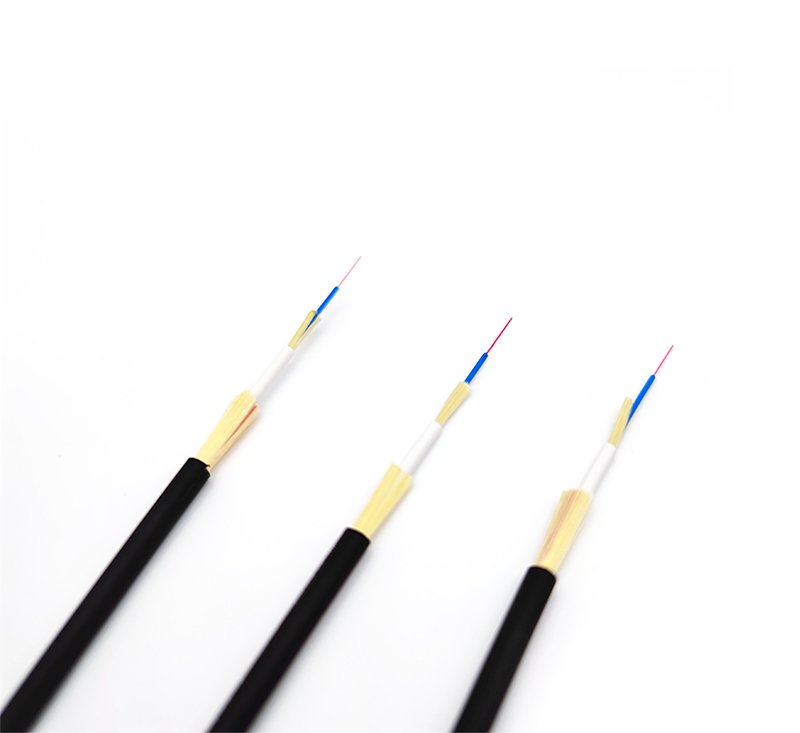Twisted-pair cables are commonly used in Category 5, Category 5e, Category 6, and Category 7. The former has a thin diameter and the latter has a thicker diameter. The models are as follows:
1. Category 5 cable: This type of cable increases the winding density and coats a high-quality insulating material with a transmission rate of 100MHz. It is used for voice transmission and data transmission with a high transmission rate of 100Mbps. It is used for 100BASE-T and 10BASE-T network. This is a commonly used Ethernet cable.
2. Super Category 5 cable: Super Category 5 has low attenuation and less crosstalk, and has higher attenuation to crosstalk ratio (ACR) and signal-to-noise ratio (Structural Return Loss), smaller delay error, and the function is very good. Great improvement. The maximum transmission rate of Category 5e cable is 250Mbps.

3. Category 6 cable: The transmission frequency of this type of cable is 1MHz to 250MHz, and the Category 6 wiring system should have a large margin for the comprehensive attenuation and crosstalk ratio (PS-ACR) at 200MHz. bandwidth. The transmission function of Category 6 cabling is much higher than the Category 5e specification, and is suitable for applications with transmission rates higher than 1Gbps.
An important difference between Category 6 and Category 5e is that it improves the function in terms of crosstalk and return loss. For the new generation of full-duplex high-speed network applications, excellent return loss function is extremely important. The basic link model is cancelled in the six types of specifications, and the wiring specification adopts a star topology. The required wiring interval is: the length of the permanent link cannot exceed 90m, and the length of the channel cannot exceed 100m.
4. Category 6e cable: Category 6e cable is an improved version of Category 6 cable. It is also an unshielded twisted pair cable specified in ANSI/EIA/TIA-568B.2 and ISO Category 6/E specifications. used in gigabit networks. In terms of transmission frequency, it is also 200-250 MHz like the Category 6 cable, and the maximum transmission speed can also reach 1 000 Mbps, but it has great improvements in crosstalk, attenuation and signal-to-noise ratio.
5. Category 7 cable: This cable is a new twisted pair in the ISO Category 7/F specification.
In order to adapt to the application and development of 10 Gigabit Ethernet technology. But it is no longer an unshielded twisted pair, but a shielded twisted pair, so its transmission frequency can reach at least 500 MHz, which is more than 2 times that of Category 6 cable and Category 6 super cable. up to 10 Gbps.
In fact, twisted pair has been used for a long time. Telephone transmission uses twisted pair. Twisted pair is used in many industrial control systems and in places with large interference and long-distance transmission. We are widely used today. The local area network also uses twisted pairs. The reason why twisted pair is so widely used is that it has many advantages such as strong anti-interference ability, long transmission interval, easy wiring and low price. Because the twisted pair signal also has a large attenuation, when the transmission interval is long, the frequency of the signal cannot be too high, and high-speed signals such as Ethernet can only be limited to within 100m.
For the video signal, the bandwidth reaches 6MHz. If it is directly transmitted in the twisted pair, it will also be attenuated greatly. Therefore, to achieve long-distance transmission of the video signal on the twisted pair, it is necessary to amplify and compensate. The twisted pair video Transmission equipment is to complete this function. After adding a pair of twisted pair video transceiver equipment, the image can be transmitted to 1 to 2km. The price of twisted pair and twisted pair video transmission equipment is very cheap, not only does not increase the cost of the system, but when the interval increases, the cost is much lower than that of coaxial cables. Therefore, the use of twisted pair transmission in the monitoring system has significant advantages.










